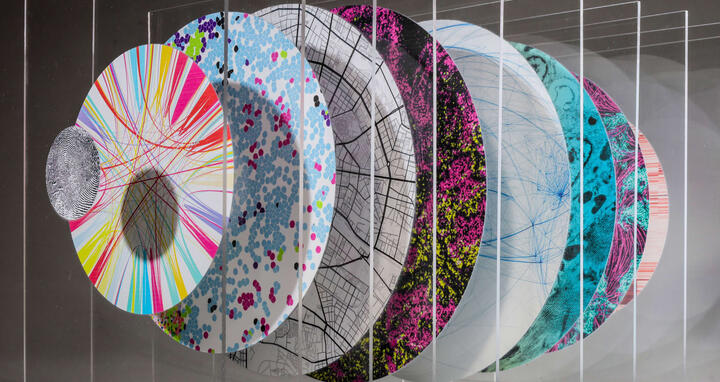Berlin Summer Meeting: Sequencing Planet Earth
Last year, researchers in Japan reported in the journal PNAS that at altitudes as high as 10,000 feet, they had found hundreds of different types of bacteria and fungi. The team reasoned that the microbes likely originated in China, over 1,200 miles away. Most intriguing of all, some of the species they found might be able to cause diseases in people. The find shone a spotlight on the emerging field of environmental DNA (e-DNA), and how pathogens in the most unlikely places might affect human health.
As the cost of sequencing nucleic acids has dropped to unprecedented lows, the applications of these technologies have broadly expanded. This includes sampling of nucleic acids in the environment, allowing researchers to detect and monitor microbial and viral communities directly from soil, water, or air samples, says Professor Markus Landthaler, Head of the Biology and Posttranscriptional Regulation lab at the Max Delbrück Center. “We can also use this information to monitor changes in the presence of pathogens,” he adds.
Ecosystem health influences human health
At this year’s Max Delbrück Center Berlin Summer Meeting titled “Sequencing Planet Earth,” which will take place on June 19 and 20 at MDC-BIMSB, scientists will present how they are using sequencing technologies in myriad ways to better understand our environment – past, present and future. Researchers around the globe can now explore genomes across a vast range of species and systems with high-resolution. As a result, sequencing has become a powerful tool for understanding evolutionary relationships, tracking ecological dynamics and human health in real time, from biodiversity studies to pathogen surveillance.
Professor Marion Koopmans, Head of the Erasmus MC Department of Viroscience, for example, will discuss her work in unravelling pathways of disease emergence and spread between animals and humans; Dr. Detlev Arendt, Group Leader at EMBL will present his research comparing the cells of simple marine animals to humans to understand the origin and evolution of our nervous system. And Drs. Grace Androga and Brenda Kwambana Adams from the Liverpool School of Tropical Medicine and University College London, U.K. will present their research on using genomics to deploy more effective strategies to control pathogen outbreaks in places with limited resources. Several talks will also focus on developing AI based tools to solve challenges in “omic” data analyses.
eDNA as a proxy for ecosystem health
There is an increased understanding that human health is deeply intertwined with the health of animals and ecosystems – a concept that lies at the heart of the One Health approach that seeks to achieve optimal health outcomes in populations worldwide by acknowledging this interconnection.
Concurrently, leaps in data science are enabling scientists to connect, compare, interrogate, and interpret biological data on an unprecedented scale, says Landthaler, who is a member of the scientific committee that organized the meeting, which is composed of researchers from the Max Delbrück Center, the Director of the Charité Center for Global Health and international partners from Brazil, Portugal and the U.K. From a human health perspective, monitoring environmental changes can help scientists detect emerging threats before they escalate into outbreaks. They can gain insight into how antibiotic resistance genes spread through soil and water, for example, or how urban expansion disrupts natural barriers to animals and pathogens.
From an environmental conservation point of view, environmental DNA and RNA sampling provide an easier way to monitor the health of an ecosystem by quickly examining what species are present – without having to painstakingly count numbers of individual organisms, Landthaler adds. “In a world facing accelerating climate change and habitat loss, both of which directly and indirectly influence human health, sampling eDNA can give researchers a way to tap into environmental flux and respond accordingly.”
Text: Gunjan Sinha
What:
18th Berlin Summer Meeting – Sequencing Planet Earth
Where:
MDC-BIMSB
Hannoversche Straße 28
10115 Berlin
Germany
When:
June 19, 2025, 9:00am – June 20, 2025, 5:00pm
Further information
18th Berlin Summer Meeting: Sequencing Planet Earth
Contacts
Dr. Verena Maier
Scientific Coordinator Research Topic ‘Genes, Cells and Cell-based Medicine’
MDC-BIMSB
+49 30 9406-3076
Verena.Maier@mdc-berlin.de
Gunjan Sinha
Editor, Communications
Max Delbrück Center
+49 30 9406-2118
Gunjan.Sinha@mdc-berlin.de or presse@mdc-berlin.de
- Max Delbrück Center
-
The Max Delbrück Center for Molecular Medicine in the Helmholtz Association aims to transform tomorrow’s medicine through our discoveries of today. At locations in Berlin-Buch, Berlin-Mitte, Heidelberg and Mannheim, our researchers harness interdisciplinary collaboration to decipher the complexities of disease at the systems level – from molecules and cells to organs and the entire organism. Through academic, clinical, and industry partnerships, as well as global networks, we strive to translate biological discoveries into applications that enable the early detection of deviations from health, personalize treatment, and ultimately prevent disease. First founded in 1992, the Max Delbrück Center today inspires and nurtures a diverse talent pool of 1,800 people from over 70 countries. We are 90 percent funded by the German federal government and 10 percent by the state of Berlin.





